“Trump’s Traffic Trilogy” – by Ed “FB” Trump, AL7N
“Getting down to the nitty-gritty of actually doing it.”
Special care is required when preparing written third party message traffic for transmission over the amateur NTS traffic networks. What is third party traffic?
The generally accepted definition is “written or voice traffic between the control operator of one amateur station (first party) and the control operator of another amateur station (second party) on behalf of another person (third party)”. Usually it amounts to short written noncommercial messages between people who are not necessarily amateur radio operators”.
The objective of the NTS is to cause these written messages to transit the system, word for word, character for character, and be able to be handled without alteration via any of the common modes of transmission currently in use such as CW, SSB, VHF-FM or PACTOR. It is important to reproduce the message at the far end of the system exactly as it was initially sent, regardless of mode transition en route.
The main source for any volume of such traffic is usually either of two occurrences.
1. An unplanned event, which forces people to use the Amateur NTS traffic networks due to failure or overload of normal regular commercial facilities or,
2. A planned event, such as a convention, fair or other public gathering that encourages use of the amateur traffic networks more or less as a novelty.
In either case, the average person will need help in composing their messages so they can be properly and expeditiously handled by the NTS network operators. This will be especially so with Health & Welfare traffic coming from disaster shelters in times of emergency.
If any large volume of third party traffic is expected, the radio operator proper must be assisted by another person or persons (“public counter” assistants) who can take care of preparing the messages for transmission. The operator will have his or her hands full just working the radio. The people detailed as counter assistants must be trained and familiar with this kind of message work, but they need not be licensed radio operators.
There are several things that must be considered when taking in message traffic from the general public:
1. The average sender has no idea about putting his message into the standard format which we require to be used, in order for the generated traffic to be capable of being properly relayed through the system. They will need assistance.
2. The word count of the message text must be kept under control to avoid network overloading. Improper or illegal content or symbols that cannot be transmitted must be kept out of the text. The message must be composed so as to convey the desired meaning without unnecessary wordage, and to minimize the possibility of being misunderstood by the recipient.
3. Addressing must be properly done in order for the message to be delivered at its ultimate destination.
a) All messages must be sent to a person or organization by NAME.
b) The address must also contain a PHYSICAL LOCATION where the addressee can be found in order to deliver the message. Street number and name, rural delivery route, post office box, hotel/motel name and room (if known) are some common ways of providing this information.
c) The address must also contain the DESTINATION City, State or Province, Country if not in USA or Canada, and postal code, if known.
d) If at all possible, the address should include a full ten-digit TELEPHONE number. In the USA and Canada, use the form NPA-NNX-NNNN, which will greatly aid expeditious message delivery.
4. The sender only needs to furnish the address, text and signature of the message. Normally, messages should be written either by the sender him/herself or the operator’s “public counter” assistant for or in behalf of the sender. Use plain half sheets of paper 8 1/2 by 5 1/2 inches in size. This is plenty large for the average
25-word message, and will help discourage excessive wordiness in message texts. Pre-printed blanks are not really necessary for messages being sent and represent an unnecessary expense and logistic problem.
5. Messages must be SIGNED properly with a name so the recipient will know who sent it. The sender should also furnish LOCAL CONTACT INFORMATION so they can be reached if there is an answer to their message or if some problem occurs with delivering it. This information should be written on the back of the message blank for future reference if needed.
Appropriate message numbering, precedence, handling codes, Station of Origin’s callsign, check, originating point , filing time (if used) and date must then be properly appended as a PREAMBLE along the top edge of the message half-sheet. This is required in order to route the message correctly through the NTS system from origin to destination. The entire message should be carefully checked over in regard to legibility and completeness at this time. These tasks are best left to the counter assistant who is trained and knows how to do them.
At this point the message is ready to be handed to the radio operator for transmission. The written message copy is now the “document of record” for the message, and after the radio operator notes on it the time sent, frequency or net, and the callsign of the station it was sent to, it should be filed in the Originating Station’s “Sent” file. The FCC no longer requires copies of amateur messages to be retained, but it is a good idea to keep them on file for at least a year anyway, “just in case”.
Only by careful attention to all these details will good service be provided for the
public. Messages that are properly originated have a far better chance of making it through the NTS to destination than those which are not.
The stated objectives of the ARRL National Traffic System are stated in the Public Service Methods and Procedures Guidelines:
“The primary objective of these methods and protocols is to facilitate transmission of a properly formatted written formal message from point A to point B such that it arrives exactly as written on the original copy, group for group, character for character, space for space. Messages filed in the NTS must be capable of being transmitted by any mode without message alteration being required. Voice and CW nets must be run with methods and protocols to operate effectively and uniformly so that message traffic may be exchanged with efficiency. Stations operating in the NTS have the responsibility to promptly relay messages along, deliver messages in a timely fashion, or service undeliverable messages back to the originator. Stations must honor this responsibility. Stations operating in the NTS interface directly with the public and served agencies representing all of Amateur Radio. Stations must represent us all well. The methods and protocols of the NTS MPG are intended to facilitate achieving these objectives. “
Recent observations indicate these objectives are not being met at any acceptable level in the National Traffic System today. There is sufficient evidence that many problems exist in the relaying process from station-to-station, net-to-net, and area-to-area across the country. The problems are not related to the use of any of the current modes or methods used in relaying third party messages. The newer digital modes appear to have problems as well as the more traditional CW and SSB or VHF-FM voice modes.
Perhaps part of the problem stems from lack of training or some other lack of understanding among many of the newer amateurs on the air today. Those who engage in third party written message handling in the Amateur Service need to understand that a certain amount of COMMITMENT is required whether it is done for the enjoyment of it or as a part of emergency preparedness planning and training. There is an indication that the shortcomings have been recognized by the ARRL as is evidenced by the recent emphasis on the ARECC training that is now being offered.
Some of the problems that have been noted in the NTS relaying processes are as follows:
1. Altered texts. The message text does not arrive at destination exactly as it was sent at origination. It appears the message “content” is being relayed, rather than exactly what was to be sent in some instances. Omissions in Preambles, Addresses, Text and Signatures are known to occur.
2. Additions of “Handling Extra” codes to message preamble during relaying, Changed points of origin, “additions” (such as telephone numbers) to address information, parts of addresses deleted en route during relaying.
3. Some names and unusual words are relayed inaccurately.
4. Message check does not agree with number of words/groups in text.
Some of these problems could be due to carelessness or lack of attention to detail during relay work; some could be due to lack of training. Message handling information certainly is not hard to find. There are numerous publications by ARRL and many others available that adequately describe how to do the work.
There seem to be instances where messages are copied and relayed on without any proper verification that what was transmitted was actually correctly received. Misuse of the correct way of “signing” for a message correctly and completely received appears to be a factor. Apparently, the word “ROGER” on voice mode, or “QSL” and “R” on CW is being used when in fact the message has not been properly and completely received and copied down. Perhaps not enough emphasis is being placed on the need to stop the sending operator and get repeats, verification or “fills” before completing the relay work.
Voice modes have unique relaying problems that do not exist in the CW or digital modes where character-by character or file transfer is used. Because of this fact, considerable extra care must be taken to ensure sufficient accuracy is maintained. Unfortunately, the English language has many words that sound the same but are spelled differently and/or have different meanings. (Example: “Four” vs. “for” etc.) Some names are troublesome. (Examples: “Cathy” vs. “Kathy” or “Sara” vs. “Sarah”, “John” vs. “Jon” etc.).
SSB and sometimes VHF-FM can distort the sound of certain words enough to cause them to be copied incorrectly. (Example: “Fifty” vs. “Sixty” etc).
Plural versus Singular can be easily misunderstood. (Example: “Meeting” vs. “Meetings” or “Slide” vs. “Slides” etc.).
Some state abbreviations can be miscopied or misused: (Example: “MA” is sometimes relayed as “Maine”; “PA” becomes “W VA” etc.) All operators need to learn the standard accepted abbreviations for all 50 states and use them.
Careful message origination can reduce the potential for transmission errors but that is beyond the control of relay operators. They must relay accurately what they receive no matter how strong the temptation is to “correct” perceived errors. Message texts must be protected from alteration at all costs. This is one place where little things DO matter.
If the message text is already messed up, don’t make things worse by trying to “fix” it without proper verification from the operator who sent it to you, or better yet from the originating station if possible.
Proper use of phonetics can aid message relaying in voice modes. However, care must be taken to use the standard ITU phonetic code words, not some cute variation that you dreamed up. The meaning might be different to the receiving operator. Learn and use the standard ITU Phonetic Code, always.
Some messages that you relay may not make sense to you. Resist the urge to “edit” or “change” a message text in any way. Whatever it is the message conveys may make perfect sense to the sender and recipient. As a relay operator, your only job is to see that it gets through unaltered and intact. Remember: “word-for-word, group-for-group, and character-for-character”. That, and only that is your objective.
If some problem prevents prompt relaying beyond your station for an unacceptable period of time, service the originating station and request instructions…you might be requested to continue to attempt relay, or cancel the message. However, NEVER throw a message away without direct permission to do so from the sender. Either relay it or hold it and service it.
NEVER add “Handling Extra” codes in message preambles. If using a “canned” message form in your computer to handle messages digitally, make sure this is not happening to messages that do not carry “HX” codes from origination. Adding (or subtracting) “HX” codes is NOT optional with relaying stations. Never “add” information (such as telephone numbers) to message addresses. The recipient may no longer be using the number in the listing(s) you have access to. Relay only what the sender puts on the message. Delivering stations may need to look up numbers during the delivery process attempts, but NEVER-EVER “add” anything to a message when you are relaying it.
Never “shorten” or omit items in a message address. Pass it on exactly as you receive it, even if the addressee is known to you. There could be some need for all that information in the actual delivery process, which you as a relaying operator may be unaware of.
Keep accurate records of your message relaying work. File the copies of all messages you handle with proper servicing information recorded on them. Information such as date/time/frequency/call sign of station received from, and date/time/frequency/call sign of station sent to should be written on the message copy. Then you will be able to properly respond to any inquiry as to your disposition of any message that you handle, should the occasion arise. Note particularly if the message carries an “HXD” handling extra code and respond promptly with the appropriate service message to the originating station. It is a good idea to keep copies of all messages handled through your station on file for a year, “just in case”.
Diligence and great care in relaying third party written messages is required of all participants in the National Traffic System. If due regard is not paid to this requirement, all the effort of the other amateurs involved in the process is diminished or wasted. Be a helpful part of the process, instead of part of the problem.
Relay properly with accuracy and timeliness!
Handling third party written message traffic is a well-established activity in the Amateur Radio Service, and has been around about as long as the hobby itself has.
It is one of the reasons we exist. Amateurs are always helping out when commercial communications fail, sometimes we are the only service that can. The rules and conventions for this activity are well spelled out in a number of available publications. Most of the time we handle messages just for practice.
In the doing of that, here are some things to think about…..
If you check into any of the statewide nets, you might sometime get called upon to handle a third party written message. Do you know how to do it properly?
Message handling work takes a certain amount of commitment on the part of all amateur operators who engage in it. If it is to be done at all it is important that it is done correctly.
For now, we’ll talk about message delivery…
It could be called “The Last Mile” the message travels.
Consider the following scenario:
You are checked into one of the statewide evening nets, and old Joe down at Two Harbors comes on with a piece of formal traffic for your town. Net control asks you if you can handle it. It would be kind of silly to decline, wouldn’t it? So you take it on, and NCS sends you and old Joe off frequency to handle the traffic.
You tune to the assigned frequency, and give old Joe a call. You get to call Joe, because you will be the one receiving the message. Joe comes on, and his signal has gone down a little, but you can still hear him pretty well. You tell him to go ahead with the message.
You copy the message down…the band is not the best tonight, but you think you get everything OK, even though you had to ask for a couple of repeats along the way.
Now think about it (#1)…..
Are you sure you have the entire message exactly correct? Don’t say “Roger” or send the signal “QSL” on CW unless you are ABSOLUTELY SURE you have ALL OF the message OK (“OLL KORRECT”). If there is ANY doubt about ANY part of it, fix it RIGHT NOW, before you let old Joe get away. Otherwise, there will always be a nagging doubt.
Now that you have this message copied out, what are you going to do with it?
Now think about it (#2)….
How are you going to deliver it to the addressee?
How you handle this step in the process probably has more impact on the public’s perception of the Amateur Radio Service than anything else you can do. More about that in a minute.
Look at the message content….(Message precedence notwithstanding). Is it of a routine nature, or does it look like it might be something someone would want to know about right away? Is there a local telephone number on the message? This is a judgment call. If the message is of a routine nature, and the hour is late, say after 830 or 9 PM or so, probably the best thing will be to wait until the following day, and then try to phone it. If the message looks like it might be of an urgent nature, a phone call late in the evening might be OK. You just don’t want to get someone out of bed in the middle of the night and scare hell out of them over nothing. So think about it before you make that call.
Lets suppose you elect to deliver the message by telephone the following day, but the number comes up no good. What to do? You might look in the local directory, and see if there is a newer listing by name, and try that. If still no-go, your only recourse is to attempt delivery by mail.
ONCE YOU ACCEPT A MESSAGE FOR DELIVERY YOU ARE OBLIGED TO MAKE AT LEAST SOME ATTEMPT TO DELIVER IT!
The message should have some sort of a mailing address on it. If it does not, is there enough address so you could hand-carry it to the addressee someplace? If there is no way to physically send or give the message to the addressee, all you can do is file it “undelivered” and originate a return service message (now you get to send one!) to the originating station, and say so. Give a good reason for non-delivery, what ever it is. Bad address/bad phone number/moved-no forwarding address/deceased, etc.
NEVER throw a message away unless the ORIGINATOR cancels the message or otherwise instructs you to do so. Might be a good idea to keep a copy on file for a year or so anyway…just in case.
Now think about it (#3)…
Lets say you end up having to mail the message (or maybe you delivered it over the phone and the addressee wants a hard copy…it is always a good idea to offer one). Type it or write it neatly on a radiogram blank or a plain half sheet of paper in PROPER MESSAGE FORM. Put it in a neatly addressed envelope with your return address on it, and mail it. You buy the stamp.
Nothing makes a better impression on a person receiving a message than a neatly typed radiogram on an official-looking blank; especially these days when radiograms or telegrams are a VERY rare event for the average person. By the same token, a sloppily copied and poorly delivered or non-delivered message will leave a negative impression as well. People do talk, you know.
Consider this….If Aunt Minnie sends Nephew John a radiogram from some county fair someplace, she sort of expects it to get there. If Aunt Minnie and Nephew John have a phone conversation sometime after the fair, Aunt Minnie might ask Nephew John if he ever got the radio message she sent. If Nephew John remembers getting a neatly typed message in a timely manner, he will probably say “Yes, I Sure Did”, because the event left a good impression on him…”Hey…This is kinda neat!” The esteem of the Amateur Radio Service goes up a few points with both of these people, as well as anybody else they tell about it, because the message delivery was handled in a professional manner.
Yeah, I know….. “Fair Messages” are considered “junk traffic” but look at the impact this can have. Suppose Aunt Minnie asks Nephew John if he got her message, and John says “Huh? What Message?”….because he never got anything. Now the Amateur Radio Service takes a BIG hit in the eyes of these people. Aunt Minnie probably will say…”The heck with ever doing THAT again…They’re Amateurs, all right…Phooey!”
You could apply this scenario to any message activity, not necessarily traffic from County Fairs… It might be traffic from a Disaster Shelter someplace, where people are trying to find out the status of relatives and loved ones. The positive or negative impact on the public would be even greater in this instance.
So think about it (#4)…….
ANY message involving a third party could have considerable positive or negative impact on how the Amateur Radio Service is perceived by those who send and receive that message, depending on how YOU handle it. It will have even more of an impact on messages of a more important nature, such as welfare inquiries and the like.
So you have to come up with a 37 cent stamp and an envelope to mail a message…So What? That’s pretty cheap “good” PR, is it not? A short paid toll call to deliver an urgent message would likely be very well received in almost any circumstance. It buys a lot of good PR with the folks who get the message. They are usually grateful you went to the trouble. And the cost is small. Even if the message preamble bears the handling extra code “HXG”, (way too many do these days, by the way), you might want to consider a nice delivery anyway, for the above stated reasons.
What it boils down to, is simply this….If you are going to engage in handling message traffic, resolve to LEARN HOW to do it and how DO IT RIGHT, and then COMMIT YOUR EFFORTS to always doing it so. Especially when dealing with “The Last Mile”. A little practice now and then will help too.
The Amateur Service will be the better for it, and so will you.
=========================================================================
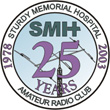 The Sturdy Memorial Hospital Amateur Radio Club will hold a Technician license class on January 7, 2006 followed by a review session and license exam on February 11, 2006. The course will utilize the ARRL’s “Now You’re Talking” course material. SMHARC members N1EZT, KB1KA, N1DPY and KB5TBB will teach the classes.
The Sturdy Memorial Hospital Amateur Radio Club will hold a Technician license class on January 7, 2006 followed by a review session and license exam on February 11, 2006. The course will utilize the ARRL’s “Now You’re Talking” course material. SMHARC members N1EZT, KB1KA, N1DPY and KB5TBB will teach the classes.

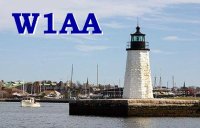 Robert “Whitey” Doherty, K1VV writes:
Robert “Whitey” Doherty, K1VV writes: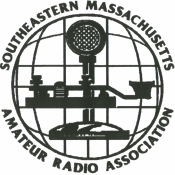 Ron Silvia, WB1HGA writes on SEMARA Members List:
Ron Silvia, WB1HGA writes on SEMARA Members List: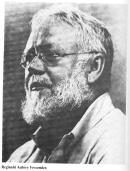 A Marshfield amateur has announced plans for a special event operation commemorating the accomplishments of radio pioneer and inventor Reginald Fessenden. Dave Riley, AA1A and the Fessenden Amateur Radio Society (W1FRV) will operate from January 1 through January 31, 2006 from Brant Rock, MA for the 100th year commemoration of transoceanic 2-way communications on 18.075 14.055 10.118 7.055 MHz.
A Marshfield amateur has announced plans for a special event operation commemorating the accomplishments of radio pioneer and inventor Reginald Fessenden. Dave Riley, AA1A and the Fessenden Amateur Radio Society (W1FRV) will operate from January 1 through January 31, 2006 from Brant Rock, MA for the 100th year commemoration of transoceanic 2-way communications on 18.075 14.055 10.118 7.055 MHz. 
 Members of the
Members of the 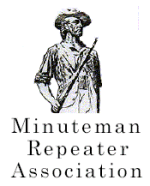
 Bob DeMattia, K1IW, MMRA President writes:
Bob DeMattia, K1IW, MMRA President writes: The November, 2005 EMA traffic net and Public Service Honor Roll totals have been posted to
The November, 2005 EMA traffic net and Public Service Honor Roll totals have been posted to 
 Eastern MA ARES and SKYWARN members received a nice write-up on the ARRL national website describing their efforts in the wake of last week’s nor’easter in which “near-blizzard conditions and high winds” prompted ARES and SKYWARN teams to activate in Eastern Massachusetts on December 9.
Eastern MA ARES and SKYWARN members received a nice write-up on the ARRL national website describing their efforts in the wake of last week’s nor’easter in which “near-blizzard conditions and high winds” prompted ARES and SKYWARN teams to activate in Eastern Massachusetts on December 9.
 Eastern MA ARES and SKYWARN members received a nice write-up on the ARRL national website describing their efforts in the wake of last week’s nor’easter in which “near-blizzard conditions and high winds” prompted ARES and SKYWARN teams to activate in Eastern Massachusetts on December 9.
Eastern MA ARES and SKYWARN members received a nice write-up on the ARRL national website describing their efforts in the wake of last week’s nor’easter in which “near-blizzard conditions and high winds” prompted ARES and SKYWARN teams to activate in Eastern Massachusetts on December 9.  Sumner Weisman, W1VIV writes on FraminghamARA-L:
Sumner Weisman, W1VIV writes on FraminghamARA-L: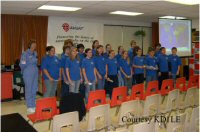 Members of the
Members of the 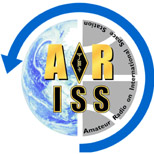 Participants in the Kuss Middle School’s Amateur Radio on International Space Station (ARISS) project received positive PR in a recent Providence (R.I.) Journal story entitled “Kuss Middle School students will talk directly to International Space Station astronauts.”
Participants in the Kuss Middle School’s Amateur Radio on International Space Station (ARISS) project received positive PR in a recent Providence (R.I.) Journal story entitled “Kuss Middle School students will talk directly to International Space Station astronauts.”  The
The